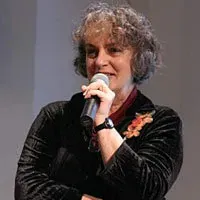Winter Warmers: Arts and Cities
Written by

By Renee Liang
About thirty people braved the storm warnings on Saturday to hear Invercargill City Mayor Tim Shadbolt, Waitakere City arts administrator Naomi McCleary and Auckland urban architect Richard Reid speak at the Winter Warmers series at Art Lounge, Auckland Art Gallery. Politician, administrator and architect showed remarkable synergy as they discussed how to put 'art' back into cities.
Ever the raconteur, Tim Shadbolt quickly warmed up the audience by telling tales (some of it in rhyming verse) of his student days protesting the development of Freemans Bay. He made the point that it is often up to the artists to define and broaden an idea and take it beyond the protest stage. He then explained how he made the transition from student rapscallion and jailbird to respectable politician in the Deep South.Initially he was reprimanded for not taking the job seriously, but after bouncing back from an election defeat, he convinced his councillors that humour and creativity was often the best response. Proof of their uptake was the suggestion that the best answer to The Rolling Stones' description of Invercargill as "the arsehole of the world" as to build a giant gateway sculpture representing, well, buttocks. (This was thankfully not implemented).
Art was a key part of Shadbolt's plan to make the South "less serious". He described how a dogged approach to tracking down funds for large-scale sports, arts and education projects in Invercargill led to huge returns in the form of community confidence - which eventually translated into economic return.
Naomi McCleary took up the theme of dubious public art when she mentioned the now-loved roundabout sculpture in Titirangi which resembles giant pink fungi. From initial ridicule this piece gained in community value, until it became a symbol of the suburb. This was the segue into a discussion about how large-scale public building projects in Waitakere take into account artistic considerations as part of the design.
All projects have an embedded "lead artist" who explores the environment, collecting stories and exploring the heritage of a site while working with the architect and engineers. The result is buildings and public spaces that interact with the community on a social as well as spatial level. The lead artist also acts as a node within the community, drawing in other artists and artisans to create what becomes a integrated artwork. The completed works become gathering places for the community, and to this end they often have an element of activity or shelter built into them.
McCleary ended by showing slides of recently completed bridges, libraries and central squares within Waitakere City, all of which demonstrated this marriage of structure and form.
From buildings we moved to the design of a whole city. Richard Reid showed his studies of the Auckland CBD, demonstrating the sparsity of public art spaces, how disconnected they were from residential zones and how roads can intrude and cut off people from public spaces. The motorway system currently "ringbarks" the Auckland CBD, effectively making it an island with access via bridges. These bridges are now conduits for traffic, but have the potential to be instead meeting and connecting places.
Reid described cities as living and changing organisms, mooting that urban design plans must be capable of adapting to the needs of each new generation. Cities should also embrace the idea of sustainable living, with people's ability to access services by walking, a key indicator of the health of a city. Due to the interaction of geography with uninspired roading, Auckland currently fails dismally in this.
Reid used his proposed design for the Birdcage Hotel/Victoria Park area as a case study, arguing that undergrounding the viaduct and allowing the Birdcage Hotel to be returned to its current position after completion of roadworks would create a better urban space, transforming it into a community "node" and allowing cross-connections from the rest of the city. This proposal has been supported at city and regional council levels but not yet from Transit NZ.
All three speakers, while coming from very different backgrounds and viewpoints, demonstrated that an individual with tenacity, vision and attention to detail can have a great effect on the living space of a city.
Also common to all of them was the idea that art has more than a passing role in the life of a city: it is absolutely vital as a way of listening to, assessing and expressing the needs of its inhabitants. Art celebrates strength of place, drawing together the threads of culture and history to create a place that is relevant to the here and now.
Winter Warmers @Art Lounge, Auckland Art Gallery
July 26th: Arts and Cities with Tim Shadbolt, Richard Reid, Naomi McCleary.
Picture Caption: Naomi McCleary
Related story
August Winter Warmers at Art Lounge
29/07/08